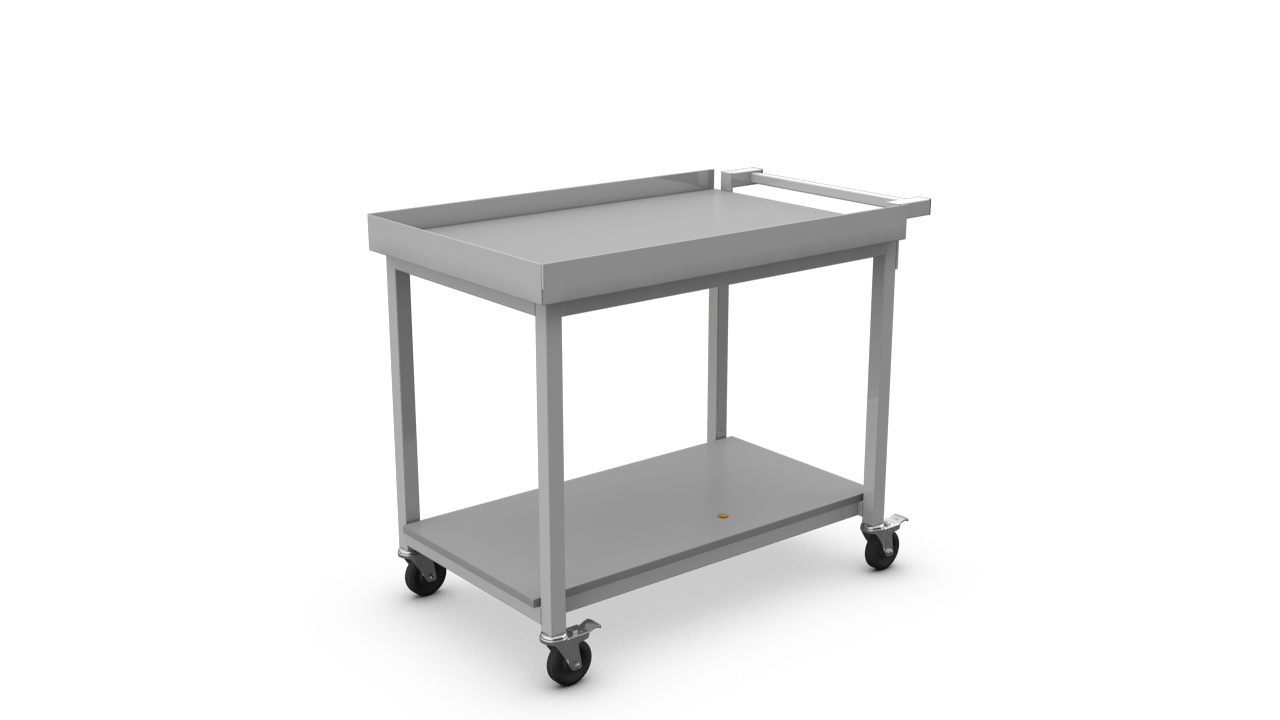Corrosive chemicals, whether solid, liquid, or gaseous, are extremely hazardous to human health and need to be dealt with safely. For this purpose, an easy, inbuilt carriage system is developed for alleviating the risk of carrying dangerous material manually in the laboratory. Here are some of the optimistic aspects of corrosive chemical carts to let you know why this equipment is a must-have for your workspace.
What is a chemical cart?
Chemically resistant laboratory carts are specifically designed lab furniture to transport hazardous chemicals and acids from one place to the other. These carts or benches are an ideal safety tool to protect the lab personnel while handling corrosive substances. It is common for people working in the laboratory to come in contact with numerous dangerous chemicals frequently. If not handled properly, any spills or accidents can injure the technician or may be fatal. Thus, these containment units ease the process of carrying heavy chemical cylinders or sensitive equipment from one section to another; reduce the risk of a potential spillage.
Types of carts available:
The containment units are configured and manufactured in a customer-friendly way. It comes in diverse sizes and dimensions to meet your laboratory needs with built-in removable caskets and dividers. They are designed from useful materials, keeping in mind the parameters essential for transportation. The two common types are:
Polypropylene Chemical Carts:
These are composed of polypropylene, a polymer of propylene, is highly stable, non-toxic, and resistant material. They are best suited to carry radioactive and hazardous chemicals that readily radiate fumes or try to react with other materials. Propylene is inert, hence extremely safe to use. These cabinets are strong and lightweight, thus can easily be handled for shifting purposes. They are build using liquid tight welding techniques. They have ample storage capacity for placing bottles and chemical cylinders and are acid-resistant.
Utility carts:
Utility carts are another option for carrying innocuous substances and heavy-duty goods within the laboratory. They serve the simple purpose of transporting lab commodities to a particular place as compared to multifunctional polypropylene carts. They are composed of Zinc, Chromium, or stainless steel. They vary from standard, medium, or large in size, are built with casters, shelves, ports, and handles to manage the safe handling of heavy pieces of equipment.
What is its significance?
While working with dangerous chemicals, it’s likely for accidents to occur. Thus safety becomes the primary concern. To ensure optimum productivity at the lab, one must choose the right cart with detailed specifications to meet standard requirements.
Objective fulfilled:
The chemically resistant carts serve the purpose of the ideal shifting solution without reacting with the polar substances themselves. It makes the task of lab workers easy by controlled management and storage features. They help in keeping a record of what’s available or not. They also facilitate moving a tool from a particular place for repair and shift it to another department for introspection and other related motives.
Flexible specifications:
These movable carts differ in customized sizes and shapes for use at any time and location. This parameter makes it all the more preferable amongst other products. They have acid-resistant casters, movable drawers, handles, modular bottle dividers, and optional floor lock brakes to enhance its flexibility to meet user expectations. Some containment benches are equipped with ports and systems to deal with electrostatic discharge issues. They are also versatile in terms of design and storage space solutions.
Safety of employees:
While dealing with corrosive substances, the safety of workers is essential to be taken care of. These carts contribute tremendously to avoid a lot of accidental spills and leakages by proper work practices and following safety manuals. They resist acid spills and deterioration by corrosion ensuring that the premises and all other equipment are safe from any untoward incident while transportation. They have recessed overflow reservoirs to safely eliminate any spilt chemical with a drain valve beneath for easy cleaning.
Durability:
The primary requirement of high yielding laboratory furniture is resilience and longevity. It should be resistant enough so there is no need to replace it regularly. For any spills, the cart material is inert and unreactive, thus avoids damage to its structural frame. They are ergonomically designed for easy use, having open wire construction to facilitate ventilation. Their configurationally setup is such that there is a minimum accumulation of junk and dust particles on it facilitating optimal cleaning.

